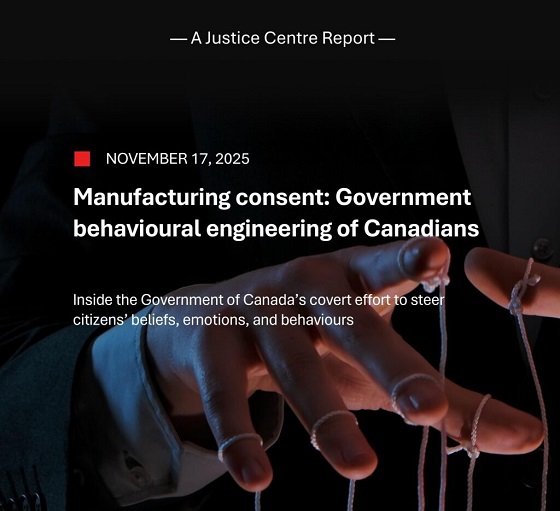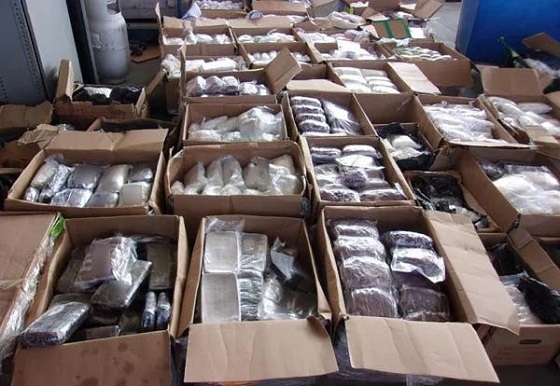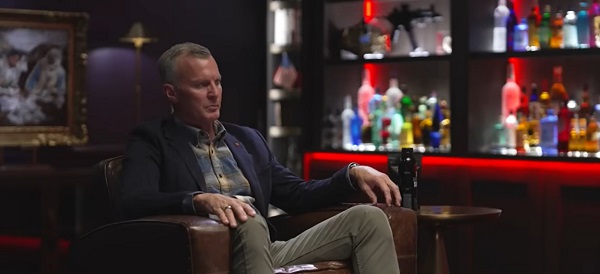Alberta
German Fitness Trainer Finds Himself Stuck in Calgary – And Making the Best of It!

Cultures collide as COVID-19’s descent on the world leaves personal trainer global adventurer Darian Bessell stuck in Calgary.
Originally from Germany, Darian has been travelling the world for the last year and a half, landing in Canada in February with plans to stay and work for a year. After getting all his permits in place and obtaining a work visa, he was hired by one of the major gyms in Calgary as a personal trainer. Unfortunately, he was immediately laid off after COVID-19 hit the city.
Seeing the situation as an opportunity to strike out on his own, Darian began offering his services as a personal trainer online, offering free consultations by Zoom or in person. His first client, Matt Keay, connected with Darian during his search for a way to improve health and mobility as well as mental wellbeing in his demanding role as a CEO.
“I look over at my two-year-old daughter and she’ll be holding a squat position playing with toys for nearly an hour, totally natural for her,” says Keay, “why can’t I do that?” Keay suffers from sore hips and wrists due to years of abuse from skateboarding and poor diet. This proves difficult, as his role as a leader demands high performance and consistent energy.

“I’ve got training every day with Darian … well, it’s more like all day long,” says Matt, “I’ve heard people say how fitness is a lifestyle, well I really understand that now. I am standing more at my desk, doing more stretches, busting into a squat in the boardroom and the pain I’ve dealt with for years is melting away.”
Darian Bessell, newly appointed Business on Camera Director of Physical and Mental Health will bring health and wellness to high-performance entrepreneurs in Calgary. “The knowing-doing gap is a worldwide common issue,” offers Bessell, “people know that enjoying nuts as a snack is healthier than a chocolate bar, and they know the way they feel physically could be better. Often some simple support tools to improve mobility can have a huge impact on overall fitness and hold the key to a new healthy lifestyle.”
The human body sends signals that it is in poor condition by aching and demonstrating discomfort. The mind also sends signals, for example, feeling depressed or tired all the time. Most people know that they have to change something, but it is all too easy to get caught up in routines and maintain bad habits.
“Most people have the desire to do more for their mental and physical health, so why not just do it then?”
Health and fitness is one of the most flooded industries on the market with new gadgets, diets and methods constantly emerging, leaving no shortage of options when it comes to personal health.
“Choosing to work with Darian was based on the education he had regarding the symbioses between mental health and physical performance, nutrition and mobility. He often referred to a program created by Dr. Kelly Starrett called “Becoming a Supple Leopard,” continues Keay, “a ton of professional athletes and stunt actors are Supple Leopards; I would describe it as intentional and intuitive. For me at this time, the goal is to feel better everywhere, increase mobility, energy, and mood in under thirty minutes a day.”
Darian’s goal is to help individuals overcome the disconnect between desire and action by cultivating discipline and a strong commitment to health and happiness in his clients. “People have to take a huge step to get over the gap between knowing what is good for them and really having the discipline to do it,” says Bessell, “Human beings get used to things so fast and fall into a cycle of ‘I need to do something about that’, then continue to ignore it, and fall into the deep hole between knowing and doing.”

Darian gives people that much-needed kick in the butt. By helping clients reposition their approach to fitness and replace negative habits with positive changes, his program addresses physical and mental wellbeing, leaving clients feeling better than ever. “Other benefits include better sleep, more focus and better work-life balance,” says Darian, “it is all about implementing a holistic approach to health to get your body in an efficient, healthy position, and maintain it with intentional practice.”
Keay is thrilled with his results and excited to see where the program takes him. “I am constantly paying attention to my body now,” he says, “the way I sit, the way I walk, engaging my core, doing a squat instead of bending over to pick something up…it’s really had a tremendous impact on my ability to move properly, and we’re just getting started.”
Darian can be reached by phone at 403-478-3836 or [email protected]
For more stories, visit Todayville Calgary.
Alberta
National Crisis Approaching Due To The Carney Government’s Centrally Planned Green Economy

From Energy Now
By Ron Wallace
Welcome to the Age of Ottawa’s centrally planned green economy.
On November 13, 2025, the Carney government announced yet another round of projects to be referred to the newly created Major Projects Office (MPO) established under the authority of the Building Canada Act (2025). That Office, designed to coordinate and streamline federal approvals for infrastructure projects deemed by Cabinet to be in the “national interest”. The announcement made scant reference to the fact that most of the referred projects had already received the regulatory permits required for construction or are, in several cases, already well under way.
Meanwhile, the aspirations of Alberta’s Premier Danielle Smith were not realized with a “Memorandum of Understanding” (MoU) signed with the Carney government before the 112th Grey Cup in Winnipeg. It remains to be seen if Canada and Alberta can in fact “create the circumstances whereby the oil and gas emissions cap would no longer be required” and if these negotiations will result in a “grand bargain” with the federal government. For its part, Alberta has signaled a willingness to change its industrial carbon tax program to encourage corporations to invest in emissions reduction projects while Alberta’s major energy producers have signalled that they are willing to consider carbon capture and methane reduction within an agreed industrial carbon pricing scheme. Notwithstanding concerns about its financial and technical viability, the Pathways Alliance Project appears to have become a cornerstone of Alberta’s negotiations with the federal government.
In early 2025 Premier Smith issued a list of nine demands accompanied by a six month ultimatum demanding the federal government roll back key elements of its climate policy. Designed to re-assert Alberta’s autonomy over natural resources, Smith’s core issues centered on the repeal of Bill C-69 (the “no new pipelines act) and Bill C-48 (the Oil Tanker Moratorium Act) scrapping the proposed Clean Electricity Regulations and abandonment of the net-zero automobile mandate. In face of a possible refusal by Ottawa to deal with these outstanding issues, Premier Smith launched a “Next Steps” panel as a province-wide consultation to “strengthen provincial sovereignty within Canada” – a process that could possibly lead to a referendum on Alberta’s future within Confederation.
Subsequently, in early October, Premier Smith also announced that her government, in collaboration with three pipeline industry partners, would advance an application to the Major Projects Office for a new oil pipeline from Alberta to a marine terminal on the northwest coast of British Columbia. The intent of the application is to have this new pipeline designated as a ‘project in the national interest’ to receive an accelerated review and approval timeline. Alberta is planning to submit that application in May 2026 to address the five criteria set by Ottawa for national interest determinations. Notably, the removal of what Premier Smith has termed ‘bad laws’ would be a prerequisite to construction of this proposed project.
As the Carney government continues its complex dance around these issues it remains to be seen how, or if, Smith’s demands for Canada to roll back federal legislation will be met. While Premier Smith staunchly advocated for the removal of what she termed to be the ‘bad laws’ standing in the way of the “ultimate approval” of a pipeline to the B.C. coast it remains to be seen if the Carney government will to accede to most, or even any, of these demands in ways that could clear the way for a new oil export pipeline from Alberta. At a time when the Carney government appears to be doubling down on its priority to reduce Canadian emissions it remains to be seen if Alberta can in fact increase oil production without increasing emissions.
Liberal MP Corey Hogan, who serves as parliamentary secretary to the Minister of Energy and Natural Resources the Honourable Tim Hodgson, noted that: “So as long as we can get to common understandings of what all of those mean, there’s not really a need for an emissions cap.” This ‘common understanding’ may signal a willingness by Ottawa to set aside the Trudeau government’s signature proposed oil and gas emissions cap in exchange for major carbon capture and storage projects in Alberta that would be combined with strong carbon pricing and methane regulations.
While this ‘common understanding’ may yet lead to a ‘grand bargain’ it would nevertheless effectively create two different classes of oil in Canada, each operating under different sets of regulations and different cost structures. Western Canada’s crude oil producers would be forced to shoulder costly and technically challenging decarbonization requirements in face of a federal veto over any new oil projects that weren’t ‘decarbonized.’ Canadian-produced oil would be faced with entering international export markets at a significant, if not ruinous, competitive disadvantage risking not only profitability but market share. Meanwhile, this hypocritical policy would allow eastern Canadian oil refiners to import ‘carbonized’ oil from countries with significantly looser environmental standards.
Carney’s November 2025 “Canada Strong” federal budget sets out $141.4 billion in new spending over five years with a projected $78.3 billion deficit for 2025–26. As Jack Mintz points out, while that budget claims to be “spending less to invest more”, annual capital spending will double from $30 billion a year to $60 billion a year over five years:
“… as federal program spending, which excludes interest on debt, is forecast to rise by 16 per cent from $490 billion this fiscal year to $568 billion in 2029-30. During the current year alone, the spending increase is a remarkable seven per cent. Public debt charges will soar by 43 per cent from $53 billion to $76 billion due to growing indebtedness and higher interest rates. No surprise there. Deficits — $78 billion this year alone — accumulate by a whopping $320 billion over five years.”
Since 2015 Canada has experienced a flight of investment capital approaching CAD$650 billion due to lost, or deferred, resource projects – particularly in the energy sector. While many economists recognize that Canada’s fiscal status may be worse than it appears, the Carney government is asking Canadians to ignore these figures while they implement industrial policies that, for all intents and purposes, represent a significant regression into central planning. The ‘modernization’ of the National Energy Board that began early in the Trudeau government’s mandate appears now to have been but a first step in the progressive centralization of control by the federal government. Gone are the days when an independent expert energy regulator made national interest determinations based upon cross-examined evidence presented in a public forum. Instead, a cabinet cloaked in confidentiality that is clearly inclined toward emissions reduction as its paramount consideration, will now determine and select projects.
This process of centralized decision-making represents a dilemma that confronts not just Premier Smith but the entire Canadian energy sector. The emerging financial debacle in the Canadian EV battery and vehicular manufacturing market is but one example of how centrally planned criteria designed to achieve a Net Zero economy will almost invariably lead to unanticipated, if not economically disastrous, results.
In short, the “green economy” is not working. The Fraser Institute noted that while Federal spending on the green economy surged from $600 million in 2014/15 to $23 billion in 2024/25, a nearly 40-fold increase, the green economy’s share of GDP rose only marginally from 3.1% in 2014 to 3.6% in 2023. Moreover, promised “green jobs” have not materialized at scale while traditional energy sectors vital to Alberta’s and the Canadian GDP have been actively constrained.
This economic reality has apparently not yet dawned in Ottawa. As Gwyn Morgan points out, Prime Minister Carney who, in 2021 with Michael Bloomberg, launched the Glasgow Financial Alliance for Net Zero (GFANZ), has not changed his determination to hike Canadian carbon taxes, proposing to increase the industrial levy from $80 to $170/ton by 2030. GFANZ was created to align global financial institutions with net-zero emissions targets bringing together sector-specific alliances like the Net Zero Banking Alliance (NZBA) and the Net Zero Asset Managers (NZAM). However, early in 2025 GFANZ faced significant challenges as major U.S. banks exited the NZBA followed by the Net-Zero Insurance Alliance (NZIA) that disbanded entirely in 2024 after a wave of member withdrawals. GFANZ was forced to undergo a strategic restructuring in January 2025 to shift from a coalition-of-alliances to a more open, standalone platform focused on mobilizing capital for the low-carbon transition through pragmatic climate financing. ‘Pragmatic’ indeed.
While Carney’s GFANZ has effectively imploded, his government ignores developing new realities in climate policy by continuing to implement the Trudeau government’s green agenda with programs like the Pan-Canadian Framework on Clean Growth and Climate Change. That program contains a plethora of ‘green economy’ measures designed to reduce carbon emissions in parallel with the 2030 Emissions Reduction Plan that commits Canada to reducing greenhouse gases (GHG) to achieve net-zero by 2050.
These policies ignore the recent change of mind by thought-leaders like Bill Gates who acknowledges that “climate change, disease, and poverty are all major problems we should deal with them in proportion to the suffering they cause.” This aligns his thinking with that of Bjorn Lomborg who states:
“Climate change demands action, but not at the expense of poverty reduction. Rich governments should invest in long-overdue R&D for breakthrough green technologies — affordable, reliable alternatives that everyone, rich and poor alike, will adopt. That is how we can solve climate without sacrificing the vulnerable. More countries, including Canada, need to get on board with the mission of returning the World Bank to focusing on poverty. Raiding development funds for climate initiatives isn’t just misguided. It’s an affront to human suffering.”
Philip Cross also expressed hope that 2025 may yet represent a “turning point in a return to sanity in public policy:”
“Nowhere is the change more evident than in attitudes to green energy policies, once the rallying cry for left-wing parties in North America. Support has collapsed for three pillars of green energy advocacy: building electric vehicles to eliminate our need for oil pipelines and refineries; using the financial clout of the Net-Zero Banking Alliance to force firms to eliminate carbon emissions; and legally mandating the shift from fossil fuels to green energy.”
Nonetheless, Prime Minister Carney appears resolute in the belief that Canadian policies for Net Zero are not hobbling investment in the energy sector while choosing to ignore alternative regulatory and investment tools that could make a material difference for the economy. Carney also appears to ignore major Canadian firms like TC Energy that have re-directed investments of $8.5 billion into the U.S. as they cite significant concerns about the Canadian regulatory structure. Similarly, Enbridge has advocated for “significant energy policy changes” in Canada while focussing attention not on new export pipelines but instead to incrementally upgrade capacity within its existing Mainline system network.
Canada’s destiny as a ‘decarbonized energy superpower’ will be largely determined by the serious economic consequences that will result from a sustained ideological push into ‘clean energy’. That said, will this be accomplished by a chaotic, ever-more centralized process of decision making, masquerading as a coherent national energy policy?
Conclusion
As Gwyn Morgan has succinctly written, it remains to be seen if the Carney government will be willing to make a “climate climbdown” in face of the reality that net zero goals are being broadly abandoned globally or will they continue to sacrifice the Canadian economy to single-minded, unrealistic or unattainable, goals for emissions reduction?
To date none of the projects referred by the Carney government to the Major Projects Office has been designated as ‘being in the national interest’. Moreover, the Alberta bitumen pipeline advocated by Premier Smith has not yet appeared on any list. Nonetheless, she apparently remains resolute in maintaining negotiations with Ottawa stating: “Currently, we are working on an agreement with the federal government that includes the removal, carve out or overhaul of several damaging laws chasing away private investment in our energy sector, and an agreement to work towards ultimate approval of a bitumen pipeline to Asian markets.”
As Alberta’s ultimatums and deadlines to Ottawa pass, it would be reasonable to question whether Premier Smith is, in fact, being confronted with the illusory freedom of a Hobson’s choice: Either Alberta must accept, at unprecedented cost, Ottawa’s determination to realize Net Zero or it will get nothing at all. While she may be seeking federal support to enable, or accelerate, construction of new pipelines, all Ottawa may be willing to concede is a promise to do better with an MoU that would ultimately impose massive costs for ‘decarbonization’ on Alberta while eastern Canada imports oil from other, less constrained, jurisdictions. Is this a “Grand Bargain?”
Budget 2025 has introduced a Climate Competitiveness Strategy for nuclear, hydro, wind and grid modernization that projects over CAD$1 trillion in spending over five years. It also reaffirms a commitment to increase carbon taxes by $80-$170/tonne for CO2-equivalent emissions by 2030. Since it appears committed to maintaining, or even expanding, Trudeau-era green legislation, some might question any commitments from the Carney government to enter into an even-handed debate on Canadian energy policies that are so critical to Alberta’s energy sector? As the Fraser Institute points out:
“The Canadian case shows an even greater mismatch between Ottawa’s COP commitments and its actual results. Despite billions spent by the federal government on the low-carbon economy (electric vehicle subsidies, tax credits to corporations, etc.), fossil fuel consumption increased 23 per cent between 1995 and 2024. Over the same period, the share of fossil fuels in Canada’s total energy consumption rose from 62.0 to 66.3 per cent.”
While the creation of the MPO may give the appearance of accelerating projects deemed to be in the national interest it nonetheless requires a circumvention of an existing legislative base. This approach further enhances a centrally-planned economy and presupposes that more, not less, bureaucracy will somehow make Canada an “energy superpower”.
Canada continues to overlook rising economic challenges while pursuing climate goals with inconsistent policies. As such, it risks becoming an outlier in energy policy at a time when the world is beginning to recognize the immense costs and implausibility of implementing policies for Net Zero.
Premier Danielle Smith may yet face a pivotal moment in Alberta’s, and possibly Canadian, history. If Ottawa’s past performance is but a prologue, predictions of a happy outcome may require a significant dose of optimism.
Ron Wallace is a former Member of the National Energy Board.
Alberta
Alberta bill would protect freedom of expression for doctors, nurses, other professionals

From LifeSiteNews
‘Peterson’s law,’ named for Canadian psychologist Jordan Peterson, was introduced by Alberta Premier Danielle Smith.
Alberta’s Conservative government introduced a new law that will set “clear expectations” for professional regulatory bodies to respect freedom of speech on social media and online for doctors, nurses, engineers, and other professionals.
The new law, named “Peterson’s law” after Canadian psychologist Jordan Peterson, who was canceled by his regulatory body, was introduced Thursday by Alberta Premier Danielle Smith.
“Professionals should never fear losing their license or career because of a social media post, an interview, or a personal opinion expressed on their own time,” Smith said in a press release sent to media and LifeSiteNews.
“Alberta’s government is restoring fairness and neutrality so regulators focus on competence and ethics, not policing beliefs. Every Albertan has the right to speak freely without ideological enforcement or intimidation, and this legislation makes that protection real.”
The law, known as Bill 13, the Regulated Professions Neutrality Act, will “set clear expectations for professional regulatory bodies to ensure professionals’ right to free expression is protected.”
According to the government, the new law will “Limit professional regulatory bodies from disciplining professionals for expressive off-duty conduct, except in specific circumstances such as threats of physical violence or a criminal conviction.”
It will also restrict mandatory training “unrelated to competence or ethics, such as diversity, equity, and inclusion training.”
Bill 13, once it becomes law, which is all but guaranteed as Smith’s United Conservative Party (UCP) holds a majority, will also “create principles of neutrality that prohibit professional regulatory bodies from assigning value, blame or different treatment to individuals based on personally held views or political beliefs.”
As reported by LifeSiteNews, Peterson has been embattled with the College of Psychologists of Ontario (CPO) after it mandated he undergo social media “training” to keep his license following posts he made on X, formerly Twitter, criticizing Trudeau and LGBT activists.
He recently noted how the CPO offered him a deal to “be bought,” in which the legal fees owed to them after losing his court challenge could be waived but only if he agreed to quit his job as a psychologist.
Early this year, LifeSiteNews reported that the CPO had selected Peterson’s “re-education coach” for having publicly opposed the LGBT agenda.
The Alberta government directly referenced Peterson’s (who is from Alberta originally) plight with the CPO, noting “the disciplinary proceedings against Dr. Jordan Peterson by the College of Psychologists of Ontario, demonstrate how regulatory bodies can extend their reach into personal expression rather than professional competence.”
“Similar cases involving nurses, engineers and other professionals revealed a growing pattern: individuals facing investigations, penalties or compulsory ideological training for off-duty expressive conduct. These incidents became a catalyst, confirming the need for clear legislative boundaries that protect free expression while preserving professional standards.”
Alberta Minister of Justice and Attorney General Mickey Amery said regarding Bill 13 that the new law makes that protection of professionals “real and holds professional regulatory bodies to a clear standard.”
Last year, Peterson formally announced his departure from Canada in favor of moving to the United States, saying his birth nation has become a “totalitarian hell hole.”
-

 Alberta7 hours ago
Alberta7 hours agoNational Crisis Approaching Due To The Carney Government’s Centrally Planned Green Economy
-

 COVID-1920 hours ago
COVID-1920 hours agoNew report warns Ottawa’s ‘nudge’ unit erodes democracy and public trust
-

 Agriculture8 hours ago
Agriculture8 hours agoFederal cabinet calls for Canadian bank used primarily by white farmers to be more diverse
-

 Great Reset6 hours ago
Great Reset6 hours agoCanadian government forcing doctors to promote euthanasia to patients: report
-

 Crime2 days ago
Crime2 days agoHow Global Organized Crime Took Root In Canada
-

 Energy2 days ago
Energy2 days agoExpanding Canadian energy production could help lower global emissions
-

 Business2 days ago
Business2 days agoThe numbers Canada uses to set policy don’t add up
-

 COVID-1924 hours ago
COVID-1924 hours agoFreedom Convoy protestor Evan Blackman convicted at retrial even after original trial judge deemed him a “peacemaker”




